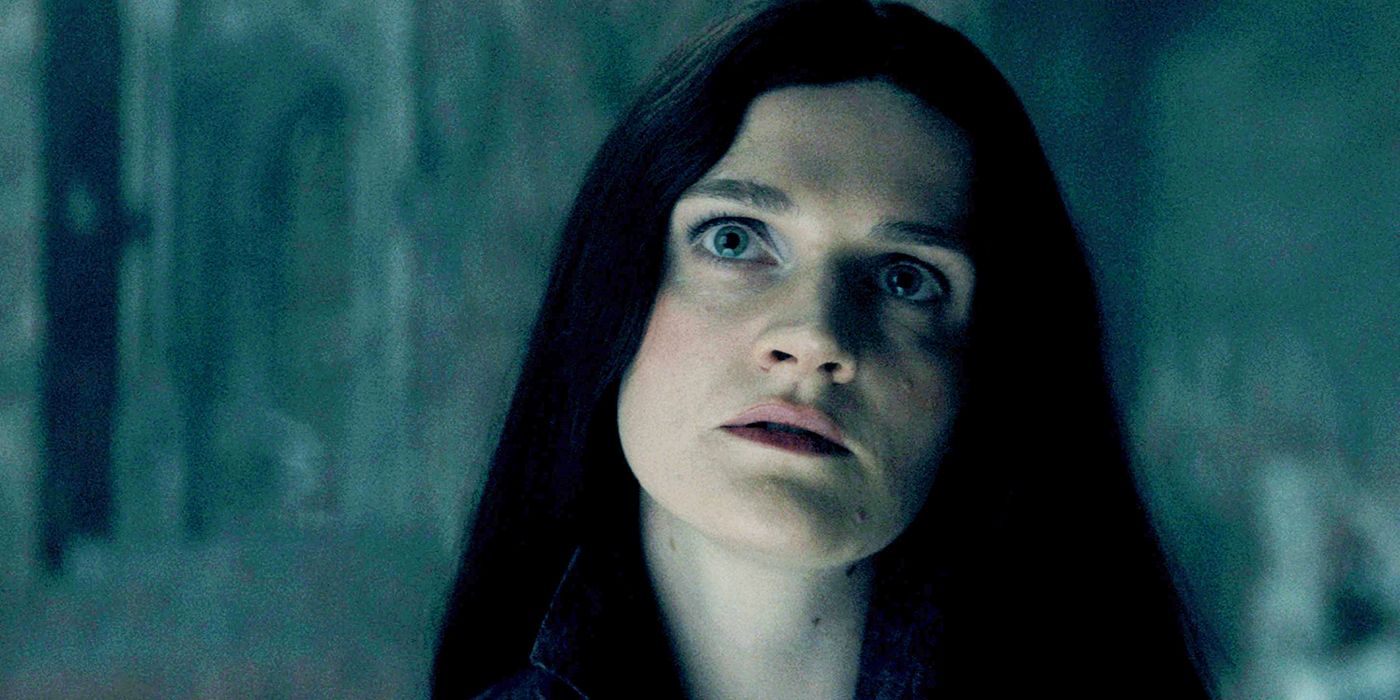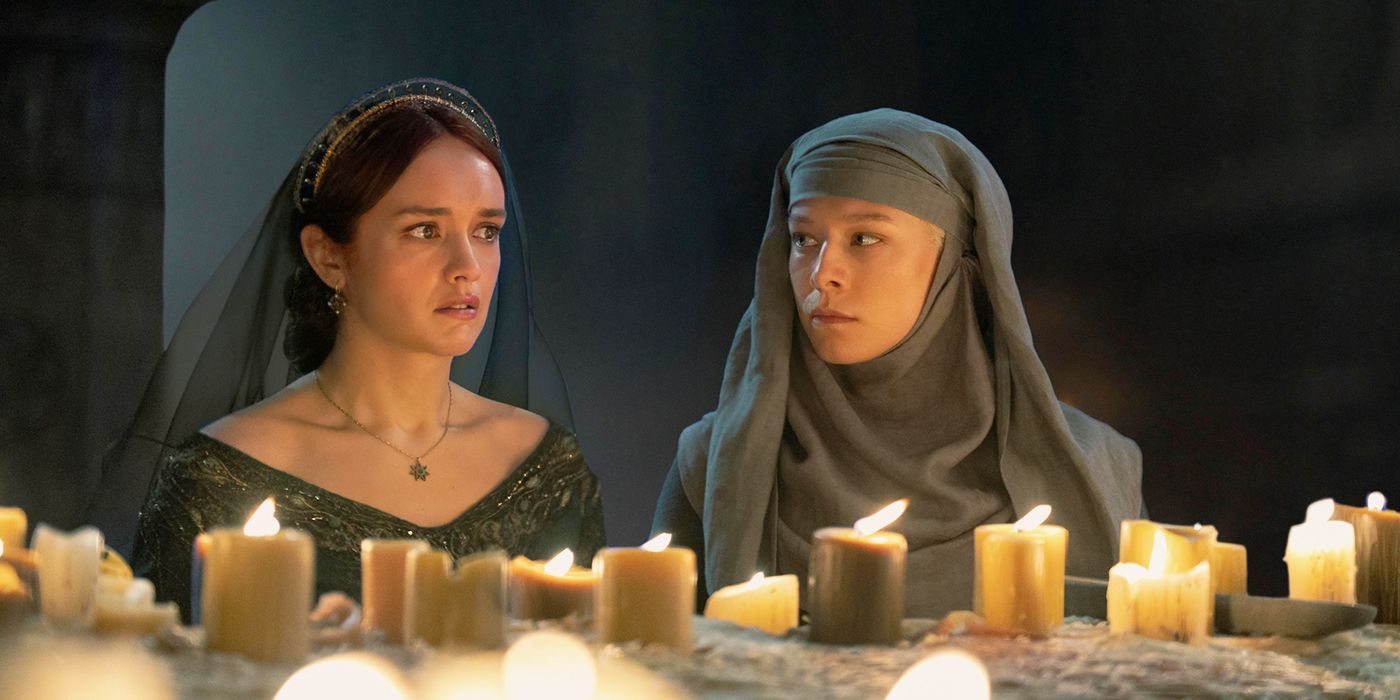Editor’s Note: The following contains spoilers for Season 2 Episode 3 of House of the Dragon
The Big Picture
- Rather than break them down, oftentimes
House of the Dragon
can end up reinforcing gender stereotypes when it comes to their female characters. - By presenting its female characters as inherently peaceful beings while its male characters are brutes,
House of the Dragon
leaves no room for nuance. - The show ultimately reduces its women to mere diplomats in a war that is as much theirs as it is the men’s.
More than anything else that came before it, the third episode of House of the Dragon Season 2, “The Burning Mill”, gave us a good look at two factions fighting each other over power and dominance. However, this time, it’s not the Greens and the Blacks that we are talking about. Instead, “The Burning Mill” focuses on a strange rivalry between its male and female characters when it comes to whether or not it’s time to put the armies in motion in this, so far, pretty cold war. On one side, we have Alicent (Olivia Cooke), Rhaenyra (Emma D’Arcy), and Rhaenys (Eve Best) doing everything in their power to stop the dispute between the two sides of House Targaryen from evolving into bloodshed. On the other, we have Ser Criston (Fabien Frankel), Aegon (Tom Glynn-Carney), Daemon (Matt Smith), and virtually every man in the Seven Kingdoms ready to kill and die in battle. This tension leads to a lot of council scenes in which male advisors are all about getting their swords sharpened while the ladies just want to talk it out. From Alicent’s message to Rhaenyra to Rhaenys’ speech about the cycle of violence, it’s pretty clear that, at least where Westeros is concerned, if our girls had it their way, war would not be brewing on the horizon.
This isn’t a strange turn of events for House of the Dragon. Over the course of its previous season and the first few episodes of the current one, the show has made it quite clear that its real villain is neither a Targaryen nor a Hightower, but patriarchy itself. If not for the way Westerosi society is structured, perhaps a war for the Iron Throne wouldn’t even be a possibility. After all, Rhaenyra’s claim to the throne can only be challenged because the lords of Westeros cannot bring themselves to accept a woman as their ruler. With this in mind, showrunners Ryan Condal and Miguel Sapochnik make a true effort to depict the sexism that governs the Seven Kingdoms as detrimental not just to the series’ female characters, but to everyone in their universe. From big plot points, such as the death of Queen Aemma (Siân Brooke) at the beginning of Season 1, to seemingly innocuous moments, such as Aemond’s (Ewan Mitchell) humiliation at his brother’s hands in this past episode, toxic masculinity is shown to harm us all. Thus, it is only logical for the show to favor an approach in which said masculinity is also the one responsible for a war that is becoming more and more inevitable with each passing episode.
‘House of the Dragon’ Ends Up Reinforcing Gender Stereotypes
But there is something about this approach that just doesn’t sit right. In its attempt at creating a feminist narrative, House of the Dragon ends up reinforcing some pretty old gender stereotypes. And, in doing so, it leaves no room for nuance for its female characters. The show’s main take seems to be that women are inherently peaceful beings, while men are the ones with violent minds. Now, there is indeed something to be said about how boys are brought up to ignore their own feelings and indulge in violent behavior, while girls are usually taught to favor conversation and non-violent solutions. However, there is also something extremely essentialist in showing women as more diplomatic and men as brutes without discussing why their personalities tend to evolve in such opposing ways. And House of the Dragon doesn’t allow for a deeper discussion, nor for nuance when it comes to how it portrays its male and female characters.
Let’s take a closer look at how this pops up in “The Burning Mill”, shall we? The episode starts with two groups of boys from House Bracken and House Blackwood arguing over a plot of land. The argument soon evolves into a fully-fledged battle that also serves as the first actual combat of the Dance of Dragons, as Houses Bracken and Blackwood support different Targaryen factions. With first blood spilled, it becomes impossible to avoid the fact that the dispute between Rhaenyra and her half-brother Aegon will eventually evolve into a vicious war. On the Green side of the battlefield, characters like Ser Criston and Aegon constantly show their willingness to pick up arms even though they are not yet ready to do so. Representing the Blacks, Daemon has decided to follow up the murder of Prince Jaehaerys with a solo takeover of Harrenhal. As he rides his dragon and marches into the rainy castle, Rhaenyra’s nearly all-male council tries to convince her to massacre her half-brother’s troops before they have a chance to get to her.

Related
Who Is the Witchy Alys Rivers in ‘House of the Dragon’ Season 2?
And did she just tell Daemon about his death?
Now, without a single scene devoted to explaining their trains of thought, all female characters seem to be on the same page regarding the necessity to keep war at bay. Though she did say that she wanted the head of Aemond for what he did to Lucerys (Elliot Grihault) not two episodes ago, Rhaenyra now prefers to talk things out with Alicent instead of sending her dragons into combat. Rhaenys, in turn, despite having burst into Aegon’s coronation with her dragon at the end of Season 1, advises her to look for a more peaceful solution via a speech about the endless cycle of violence. At the Greens’ table, Alicent is ignored as she tries to point out the flaws in Ser Criston’s (lack of) strategical thinking, and Helaena (Phia Saban) proclaims that grieving for her son won’t do her any good. The only woman that seems ready to head into battle is Baela (Bethany Antonia), who ignores her aunt’s orders and attacks Ser Criston’s men as soon as she spots them. With this sole notable exception, all female characters in House of the Dragon seem to have drowned their sorrow, their rage, and even their political machinations in favor of a more peace-loving persona.
‘House of the Dragon’ Has a History of Black and White Feminism
This creates a rather black and white template for the characters of House of the Dragon: you’re either a bloodthirsty man or a diplomatic woman. Again, this could read as a progressive text, a text that highlights the wisdom present in often disregarded feminine points of view, but House of the Dragon doesn’t succeed in presenting it this way. Apart from that one scene with Baela, there is no nuance to how the characters think and behave inside what is expected of their gender, which results in a sort of black-and-white perception of how the world works. And what’s worse is that this is not the first time that House of the Dragon has presented the way men and women — particularly women — exist in its universe not as a spectrum, but as a dichotomy.
Going all the back to 2022, when Season 1 first dropped, Miguel Sapochnik talked to Empire about the characterization of Alicent and Rhaenyra. Discussing how they are equally, but also quite differently affected by the patriarchal structure that surrounds them, the showrunner recalled a conversation with Condal in which they said “What if Alicent is like “Women for Trump,” and Rhaenyra’s like punk rock?” Indeed, this perception of both characters informed a lot of what we see in House of the Dragon Season 1, in which Rhaenyra is depicted as a rebellious princess with often no regard for the perils and demands of her position, while Alicent plays the part of the silent victim in her father’s plan to get the Hightower family closer to power instead of being enlisted as his knowing partner-in-crime. With the show’s first season having so few female characters that get any proper screen time devoted to them, Alicent and Rhaenyra, with their completely opposing, nuance-lacking personalities, become two fixed boxes into which women have to fit.
‘House of the Dragon’ Takes Away Agency from Its Female Characters
It is pretty clear, by now, that House of the Dragon is a show with a message. And, you know, with a story about a kingdom’s first queen being challenged due to her gender, this is far from a bad thing. It is, in fact, a necessity. However, by putting its female characters into such small boxes, the showrunners are, more often than not, failing to get their point across. The message comes out botched, reinforcing old dichotomies that should actually be challenged: the peaceful woman versus the violent man, the rebel girl versus the submissive wife. By not allowing its women to exist in the nuanced spaces between these extremes, House of the Dragon fails their characterization. And, to add insult to injury, it also removes their agency.
This is not an empty accusation. Without the liberty to make decisions that are actually coherent with their personalities instead of with what they are supposed to represent, Rhaenyra, Alicent, Rhaenys, and every other female character in the show become a victim in a men’s war. This shouldn’t be the case. After all, even if the final scene of “The Burning Mill” attributes the Dance of the Dragons to a misunderstanding, with Rhaenyra revealing to Alicent that the Aegon King Viserys (Paddy Considine) was talking about was not his son, but Aegon the Conqueror, it is actually an inevitable battle for control that involves not just one, but two power-hungry families. Rhaenyra, Alicent, and Rhaenys should be able to be generals in this war that is as much theirs as it is Daemon’s or Aegon’s. Why, then, are they being reduced to silenced diplomats?
House of the Dragon is currently streaming on Max in the U.S. with new episodes airing every Sunday.
Watch on Max





